According to results announced by California’s Lawrence Berkeley National Laboratory, it appears that microbes may be eating up the oil spewed into the water by the Deepwater Horizon disaster. Study results suggest microscopic, oil-eating bacteria that have evolved among the natural petroleum seeps on the sea floor are viewing the BP oil spill as the banquet of a lifetime and are helping to quickly get rid of the oil by eating it up.
In truth, these results may or may not be real, especially considering that the study results have not been duplicated as yet by any other researchers and they are being trumpeted by BP. But in fact, there is probably significant truth to the concept since nature consistently shows a remarkable ability to adapt to changing environments. On the other hand, it is also unlikely that these bacteria will clean up all problems associated with the spill.
All of which brings me to the point of this week’s newsletter — that although nature is remarkably adaptive, there are limits to what that adaptability can accomplish in the human body.
Oil eating bacteria
Oil eating bacteria are actually not a surprise. Microbiologists have long been aware that bacteria have evolved that feed on petroleum hydrocarbons from natural oil seeps — with several species specific to the Gulf of Mexico where the BP oil spill took place. But scientists had feared the vast size of the Deepwater spill would either overwhelm these deep-dwelling bacteria or cause them to multiply so explosively that they would drain life-giving oxygen from the water, making it impossible for other marine life to survive.
According to the initial results of the study, neither of the worst case scenarios has appeared to manifest. And in fact, several species of oil-eating bacteria are thriving in the cold waters of the submerged oil plume, degrading the oil “faster than expected.” In addition, the evidence so far shows that oxygen consumption levels are low, with no sign of developing dead zones.
Again, we need to view these results with a raised eyebrow, especially considering that BP Oil has been quick to jump on them like an excited puppy on a brand new leather slipper. On the other hand, it is not inconsistent with what we know about nature.
Diversity 2.3 miles down
Actually, the ability of bacteria to modify themselves so they can live on spilled oil should hardly come as a surprise. Long ago, bacteria evolved that fed on the rubber that comes from automobile tires — to the extent that tire manufacturers now have to use chemical additives in their tire rubber to prevent bacterial decay. However, in yet another spectacular display of adaptation, these same additives, over time, are broken down by white and brown rot fungal species that live in soil and beside roadbeds. Once the additives are broken down, the rubber eating bacteria are free to gorge on their food of choice.
But so far, all we’re talking about is the simple adaptation of simple species.
As it turns out, we can see an even more remarkable display of adaptation taking place 2.3 miles down in the cold depths of the ocean in North Sulawesi, Indonesia. Understand, not only is the water ice cold and pitch black (no chlorophyll production) at that depth, but the pressure is an almost unimaginable, bone-crushing, 2.5 tons per square inch. And yet, life has adapted to these beyond hostile conditions and not only survived…but thrived.
A joint American and Indonesian expedition, using a remotely operated vehicle called Little Hercules, spotted 30-40 new species in just a single week of diving in these waters. Unique corals live down there, and with them an entire ecosystem of specialized animals including chirostylid crabs, sea stars, shrimp, and worms. As Jeff Goldblum stated so eloquently in Jurassic Park, “Life finds a way.”
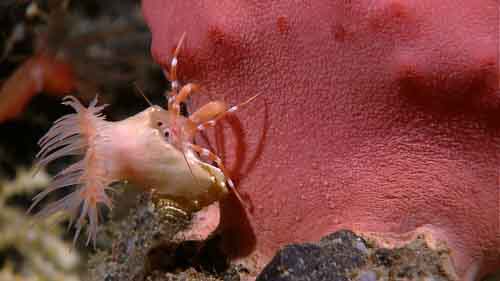
Image courtesy of NOAA Okeanos Explorer Program, INDEX-SATAL 2010
Adapting to the Western diet
All of which brings us to the point of this newsletter: adaptation in the human body.
So far we’ve talked about single celled bacteria and simple specialized underwater creatures in terms of adaptation, but what about humans? Human beings are the most complex species on the planet. Surely, they do not so easily adapt to their environment. Or do they?
When taken as a whole, people are indeed biologically complex. But to some extent, when you look at humans that way, you’re losing sight of the trees for the forest. In fact, despite all their seeming complexity, people are really comprised of a series of rather primitive simple systems that only seem complex when functioning all together. For example:
- When understood properly, the human digestive tract is not far removed from the basic tube shooting straight through the body of an earthworm. And in fact, the human digestive tract is one continuous tube from the mouth to the anus, just like an earthworm. The only thing that separates it from the earthworm is a couple of bulging areas (such as the stomach) and a couple of outpouched organs such as the liver and pancreas that feed into it.
- Mitochondria, the remarkable energy factories that power every single cell in the human body, got their start, millennia ago, as a form of eubacteria. They contain their own DNA, distinct from that of the person as a whole. Sometime, eons ago, animal cells decided to adapt to these invaders rather than get rid of them and incorporated them into their cytoplasm as energy factories.
- As much as 60-80% of your immune function is actually produced by your beneficial intestinal flora (if you have any left) — a fact that modern medicine is just now catching onto.
But here’s where things get interesting. Adaptation is not necessarily flawless, particularly in the human body which depends on maintaining the balance between so many diverse systems. The more complex the organism is, the more difficult the balancing act. In addition, humans have a unique ability that complicates the issue even more. Unique among the animal kingdom, we seem to have an astounding ability to make truly horrible choices that adversely affect our health, over and over, year after year. Animals are not capable of designing high fructose corn syrup, manufacturing it, and marketing it to their peers. They pretty much eat what nature offers — unless, like bears, they also eat what they can steal from humans. Even better, if nature can’t provide these horrible choices for us, our scientists can — endlessly manufacturing foods and electrical devices that expose us to chemicals and electromagnetic frequencies that could never exist in nature. All of this requires adaptation (for better or worse) by the human body.
But for today’s discussion, let’s keep things simple and talk about adaptation in terms of diet.
Why we need to adapt
As I’ve covered in great detail in Lessons from the Miracle Doctors, the human body was not originally designed to eat meat. We don’t have the teeth, stomach, hydrochloric acid concentration, or intestinal tract to do the job. Our digestive systems match those of the so-called fructarians, primarily gorillas and chimpanzees. Note: even though they are called fructarians, fruit makes up a much smaller part of their diet compared to leaves, roots, soft plant barks, vegetables, and nuts.
As for meat, gorillas eat none, but chimpanzees eat a small amount of fresh monkey meat when they can get it. When all is said and done, though, the digestive system of the human being was not designed to eat meat, or large amounts of grain for that matter. Nevertheless, many people manage to eat both and get by just fine — more or less.
How is that done, and what do I mean by “more or less?”
Adaptation actually takes place simultaneously in several systems of the body.
For meat eaters:
- The concentrations of stomach acid and pepsin in the stomach increase dramatically to assist in the breakdown of meat proteins.
- Blood antigens modify over the long term (several generations) so as not to react to the influx of meat proteins. However, as we will discuss later, other factors probably play a more prominent role here.
- The pancreas pumps out significantly more pancreatic enzymes to handle the undigested meat in the intestinal tract.
Dairy and eggs:
- Pretty much everything that we said about meat applies to dairy and eggs.
Grains:
- Amylase levels in the saliva increase dramatically in those who consume large amounts of cooked grains — particularly among those who don’t chew their food thoroughly to maximize the mixing of saliva with food.
- The make-up of pancreatic enzymes changes to accommodate the increased requirements for breaking down carbohydrates.
- Intestinal bacteria change — with some species dramatically increasing and others decreasing — in response to the changing “food” sources with which they are presented.
The limitations of adaptation
Sometimes the adaptations or changes that occur in the body are not beneficial to the long term health of the greater organism. Or to put it in English, they can make you sick or kill you…given enough time. For example:
Bowel bacteria
Heavy meat consumption dramatically reduces the presence of beneficial bifidobacteria in the colon and promotes the growth of E. coli. In a healthy colon there are, on average, anywhere from 100 billion to 1,000 billion beneficial bacteria per milliliter (about 1/5 of a teaspoon) that literally consume harmful bacteria and other invaders. In the typical “first worlder,” because of poor diet and neglect of the colon, the beneficial bacteria count may be as low as 4 or 5 per milliliter. (By the way, that’s 4 or 5, not 4 or 5 billion.) If you eat meat, keep consumption to 3 ounces a day or less.
Diet and cancer
falseResearch out of the University of Oxford in England has confirmed a strong link between eating meat and dairy and the development of prostate cancer. In addition, a large-scale study from several years ago shows that eating beef and processed meats sharply increases the risk of colon, lung, and other cancers. Another study from around the same time frame demonstrates the connection between breast cancer and meat. And then there’s the study that shows the connection between a typical high meat Western diet and colon cancer.
But meat is far from being the only dietary culprit when it comes to cancer. Cancer loves sugar, and feeds off of it — particularly fructose. The high levels of Omega-6 fatty acids in the modern diet, which throw the balance between Omega-6 and Omega-3 fatty acids way out of whack, have also been implicated in cancer. And of course, recent scientific studies have suggested that dairy products (and remember, man is the only animal that voluntarily eats dairy after weaning) may be linked to increased risk for prostate cancer, testicular cancer, and possibly for ovarian and breast cancers.
The bottom line is that although the human body has adapted in many ways to allow for the consumption of cooked and processed meat and pasteurized dairy, refined vegetable oil, and massive quantities of high glycemic foods, the adaptation is not necessarily flawless. Regular consumption of these foods can result in long term health consequences.
Diabetes
Cancer is not the only problem. Think for a moment how few concentrated sugars there are in nature. After honey, you have to stretch a bit. Concentrated fruit juice for example, is the result of human processing of whole fruit. In whole fruit, the sugars are far less concentrated than in juice, and they are bound to fiber, thus significantly slowing their release into the body — and thus reducing the glycemic response. Beyond fruit juices, of course, are all of the refined carbs such as white flour, white rice, table sugar, and every health expert’s favorite, high fructose corn syrup. Although the body has adapted to their consumption through changes in pancreatic and salivary enzyme production and in the ability to produce ever greater levels of insulin, in the end, the systems behind these adaptations break down. The net result is metabolic syndrome and diabetes.
Inflammatory bowel disease
Diabetes and cancer are not the only consequences of the body’s adaptations to the Western diet. As it turns out, the incidence of inflammatory bowel diseases has been increasing for decades among adults and children in the developed world — but not in the third world. A recent study out of the University of Florence has found that gut bacteria in the human digestive tract, not surprisingly, adapt to different diets. The researchers compared the gut bacteria of children from Burkina Faso in Africa to children in Italy. At first, there was little difference in gut flora between the breast-fed babies in either location. But once children stopped breast feeding and moved on to the local diet, things quickly began to change as gut bacteria adapted to the diets. For example, the African children had more Actinobacteria and Bacteroidetes while the Italians had more Firmicutes and Proteobacteria. In addition, the fiber-rich meals of millet, legumes, and other vegetables eaten by the children in Africa produced a complex mix of bacteria in the gut.
The Italian children, who ate the typical Western diet high in sugar, refined fats, and meat, had fewer microbial species. Maybe even more significantly, the Italian children had much higher levels of bacteria known to promote diarrhea, obesity, and intestinal inflammation. And finally, the African children also had two types of bacteria totally absent in the Italian kids — Prevotella and Xylanibacter — that produce more short-chain fatty acids, known to be protective against inflammation.
However, before you get too carried away with a desire to consume massive amounts of Bacteroidetes and Firmicutes bacteria, you might want to read Obesity and Probiotics. Nevertheless, the fundamental principle that diet causes intestinal bacteria to adapt still applies.
Osteoporosis
Our bodies function in a very narrow range of acid/alkaline balance (pH). Our blood in particular is very sensitive to these changes. Ideally, blood pH should be slightly alkaline at about 7.45. If it varies by even as little as a few tenths of a point, severe illness and death may result. Unfortunately, most of the food we eat is highly acid-forming in the body (meat, dairy, sodas, alcohol, cooked grains, etc.). In what way are they acid forming? When proteins are metabolized in the body, they produce sulfuric acid and phosphoric acid; carbohydrates and fats produce acetic acid and lactic acid. In the end, it becomes too much for our bodies to handle. If we don’t correct the problem by “alkalinizing” the body, disease, sickness, and death are the inevitable result. In effect, alkalinizing the body means that you are removing, or detoxing, the acid imbalance that you have created.
Your body has several adaptive mechanisms for achieving this. One of the most basic is to neutralize acids by converting them into neutral pH acid salts by combining them with the minerals sodium, calcium, potassium, and magnesium — and then excreting them in your urine. Of these minerals, calcium is the most important. Now think about this for a moment. If you have a high acid diet (lots of colas which are high in both sugar and phosphoric acid, for example) and your diet can’t provide enough calcium to neutralize the acid, where else can your body find calcium to do the job? You guessed it, from the great mineral bank in your body: your bones. Thus it is no surprise that studies have connected the drinking of cola drinks to osteoporosis.
Adaptation versus natural selection
 It is important not to confuse the concepts of adaptation and natural selection. I’ve covered this in a previous newsletter when I talked about the Blood Type Diet. The basic premise of the diet is that blood types evolved from (adapted to) the lifestyles and diets of different groups of humanity; therefore, you need to eat the diet natural to the group of humanity from which you are descended. But a closer examination of the reality behind blood types indicates that there may be a different driving force behind the distribution of blood types. Yes, blood types are genetically inherited, but the environment and natural selection, as opposed to adaptation, can influence which blood types are passed on.
It is important not to confuse the concepts of adaptation and natural selection. I’ve covered this in a previous newsletter when I talked about the Blood Type Diet. The basic premise of the diet is that blood types evolved from (adapted to) the lifestyles and diets of different groups of humanity; therefore, you need to eat the diet natural to the group of humanity from which you are descended. But a closer examination of the reality behind blood types indicates that there may be a different driving force behind the distribution of blood types. Yes, blood types are genetically inherited, but the environment and natural selection, as opposed to adaptation, can influence which blood types are passed on.
An example is seen with the Black Plague, which killed millions of people in Europe in the 13th and 14th centuries. As it turns out, the Black Plague was caused by a bacterium that is covered by sugar molecules that closely resemble the B marker on red cells. That means that since people who were blood type B back in the plague years didn’t make antibodies to that antigen, they didn’t have any antibodies in place to protect them against the plague. Hence they died in greater numbers than the other blood types which carried the antibodies. And, in fact, by the 15th century, fatalities from the plague had decreased significantly as type B blood was systematically phased out in that part of the world. The bottom line is that the distribution of blood types in Europe (low percentages of Type B as opposed to Asia) is not so much the result of adaptation through diet and occupation, but of natural selection based on disease.
Conclusion
The bottom line here is very simple. The body has many adaptive mechanisms that can help it cope with damaging circumstances (the food we eat, the water we drink, the air we breathe, and the environment we live in) as they arise. The problem is that both time and the cumulative nature of these circumstances work against you. Ultimately, if you don’t help your body out, your body’s ability to adapt will ultimately be stretched beyond the breaking point and you will find yourself facing heart disease, cancer, diabetes, osteoporosis, etc.
So what do I mean by “help your body out?”
- If you can’t give up the ribs and pork rinds, at least try including more raw fruits and vegetables in your diet — particularly no starchy vegetables. The closer you can get to three ounces a day (or less) of cooked meat, the better.
- Try periodic juicing. A one day a week juice fast (supplemented with a green superfood such as chlorella) can have profound benefits. If you’re consistent at it, in seven years, you just went one entire year without eating. That is one huge rest for your body, and one giant load of calories you’re not carrying around your midsection. Even better, in addition to the one day a week fasts, try doing a three day juice fast once a month and a 5-7 day juice fast twice a year. A one day fast gives your body a rest, a three day fast works minor repairs, and a 5-7 day fast provides a major overhaul.
 Cut way back on pasteurized cow’s milk and polyunsaturated vegetable oils.
Cut way back on pasteurized cow’s milk and polyunsaturated vegetable oils.- Clean up the water you drink and bath in. Municipal water departments do a great job in preventing the spread of major diseases like cholera in water supplies. Kudos to them. But that doesn’t mean that the water that arrives at your house is optimized for your health. You want to remove chlorine, bacteria, parasites such as cryptosporidium, toxic heavy metals, pharmaceutical drug residues, and fluoride. A whole house water filter is your best option, but you can also filter or distil the water at your tap — and don’t forget to filter the water where you bathe.
- Use an active air filter to clean up the air in your house. And make sure have your house checked for radon gas. If concentrations are high, it’s easily remedied. But what you don’t know can kill you.
- And finally, toxins are inescapable. No matter how cleanly you eat and live, you can’t escape them. They permeate the environment. Put simply, we live in a toxic environment. That means there is no choice but to detox regularly — four times a year.
Your body is a miracle. Just be careful you don’t push that miracle too far, or it might turn on you and become a curse.




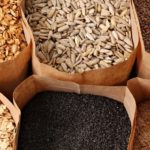

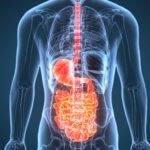
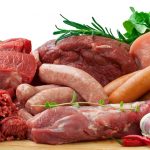
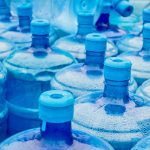



It is an excellent site. The
It is an excellent site. The info and guidance are very simple and sraight. You can also mention continentwise food items to avoid if possible. This will go a long way in creating awareness. Thanks a lot.